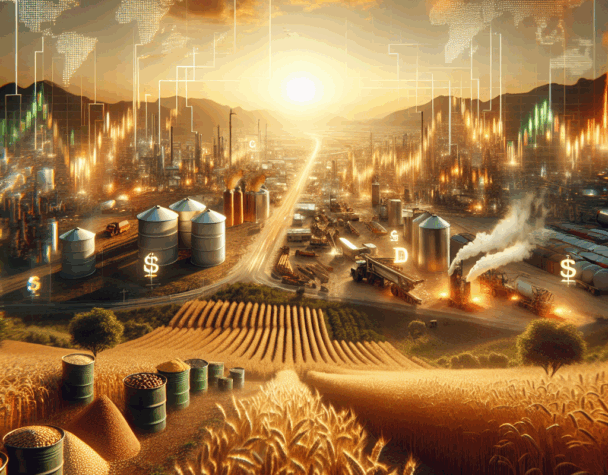
Commodity Markets Face Volatility Amid Geopolitical Tensions and Economic Shifts
Mon, June 30, 2025Commodity Markets Face Volatility Amid Geopolitical Tensions and Economic Shifts
The global commodity markets are currently experiencing significant volatility, influenced by a combination of geopolitical tensions, economic policy shifts, and evolving market dynamics. Key developments across various commodities highlight the complex interplay of these factors.
Oil Prices Fluctuate Amid Middle East Tensions and OPEC+ Decisions
Oil prices have been particularly sensitive to recent geopolitical events. The 12-day conflict between Israel and Iran in June 2025 initially caused a surge in oil prices due to supply concerns. However, prices quickly stabilized as fears eased. Additionally, the Organization of the Petroleum Exporting Countries and its allies (OPEC+) are considering output hikes, further influencing market sentiment. MidEast war highlights key cross-asset trends to watch
Gold Prices React to Global Uncertainty
Gold, traditionally a safe-haven asset, has seen price fluctuations in response to global uncertainties. Recent reports suggest that gold prices may reach $4,000 per ounce in India, driven by escalating geopolitical tensions and economic uncertainties. Israel-Iran conflict: Gold prices may hit $4,000 per ounce in India
Copper Smelters Face Market and Pricing Crises
Copper smelters are grappling with a significant market and pricing crisis. Negative treatment and refining charges (TCRC) have led smelters to pay miners to process copper concentrates, a reversal of traditional revenue streams. This imbalance is primarily due to excessive smelting capacity, especially in China, outpacing modest global mine production growth. Copper smelters are facing both market and pricing crises
China’s Commodity Imports Decline
In May 2025, China reported a decline in imports of major commodities, including crude oil, coal, iron ore, and copper. This downturn signals potential economic concerns in the world’s second-largest economy and reflects a combination of sluggish domestic growth and fluctuating global commodity prices. China’s imports of major commodities hiccup in May
Commodity Traders Expand Influence
Leading commodity trading houses such as Trafigura, Vitol, Gunvor, and Mercuria have reported substantial profits since the onset of the 2022 energy crisis. These firms are aggressively investing in assets like power plants, petrol stations, and biofuels, aiming to diversify and strengthen their control over global supply chains. Commodity traders snap up assets and tighten grip on global supply chains
World Bank Forecasts Decline in Commodity Prices
The World Bank’s latest Commodity Markets Outlook forecasts a significant decline in global commodity prices over the next two years, returning to pre-COVID-19 levels. This projection is attributed to weakening global growth and rising trade barriers, posing challenges for developing economies reliant on commodity exports. World Bank sees commodity prices falling to pre-COVID levels
In summary, the commodity markets are navigating a period of heightened volatility influenced by geopolitical conflicts, economic policy changes, and market imbalances. Stakeholders must remain vigilant and adaptable to these rapidly evolving conditions.

